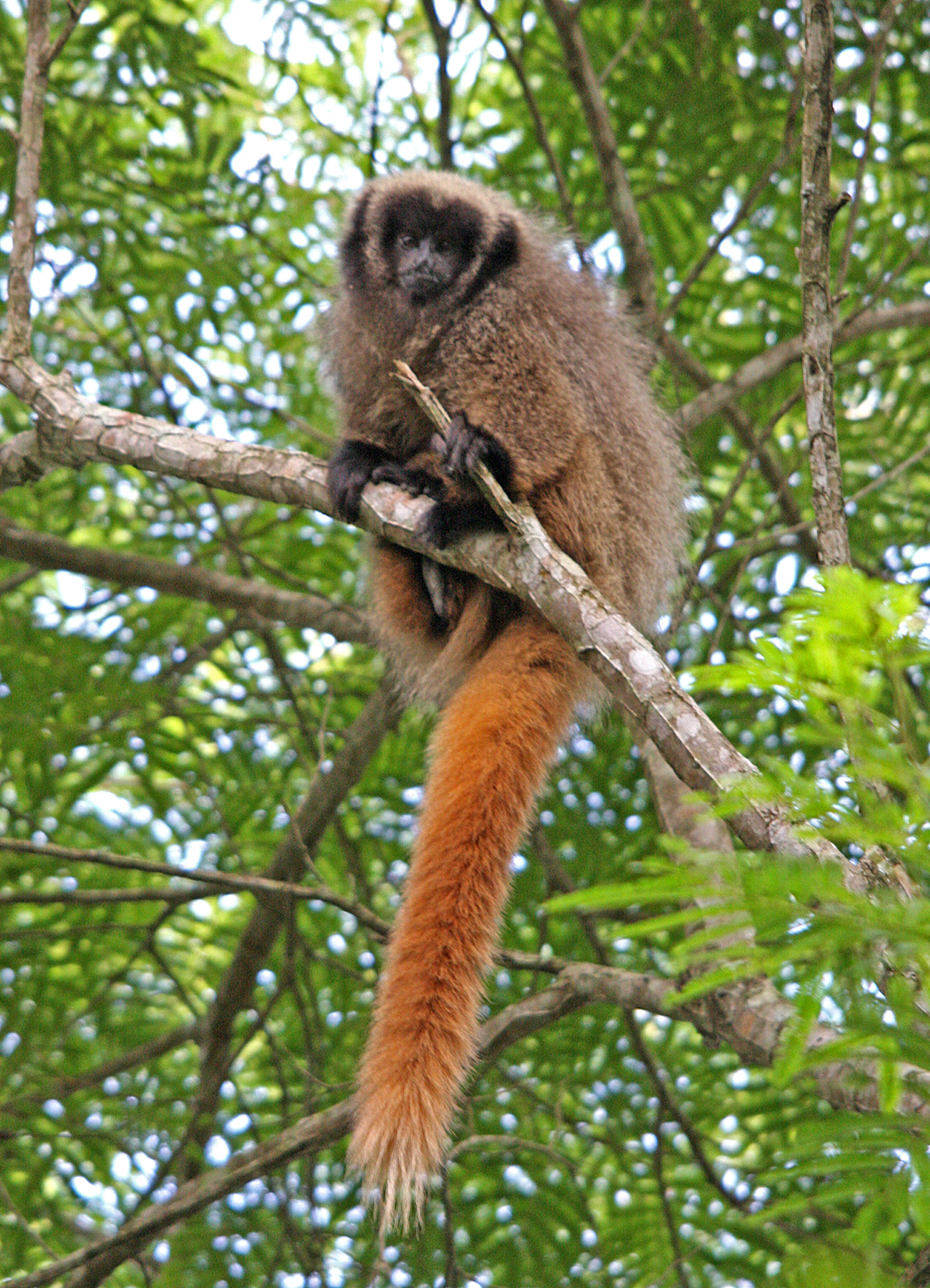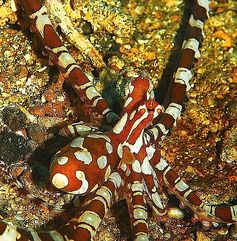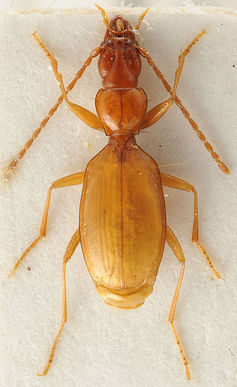What do Beyonce, Hitler, David Attenborough, Darth Vader and GoldenPalace.com all have in common? They all have species named after them. In the case of Beyonce, it is an Australian horse fly whose striking golden behind apparently inspired the scientists to give this species the scientific name Scaptia beyonceae.
Most species do not have such frivolous scientific names. Last week a new species of frog was described from New York City. It has been named Rana kauffeldi, in honour of the American herpetologist Carl Kauffeld who in the 1930s predicted a new species of leopard frog would be found on the east coast of the US.
What’s in a name? And why don’t scientists simply number species? The scientific name is not an arbitrary label, well at least not the first part, which tells us the genus of the species. From knowing this we can start to understand the evolutionary relatedness between species.
For example, chimpanzees and bonobos both come from the genus Pan; whereas humans are from Homo. Thus, as a scientist I know that chimpanzees and bonobos are closer to each other than they are to humans. Scientific names according to the naming rules for species must be unique and show evolutionary relatedness; that is, relate to the importance of common ancestor species.
The reason we need scientific names and not just common names is to permit scientists to precisely identify the species they are investigating. Returning to our New Yorker Rana kauffeldi, there are 15 species of leopard frog and in many countries common names are generic or vary by region.
I have spent many years studying titi monkeys in Brazil of which there are more than 20 species, but in Minas Gerais where I study them they are all referred to in Portuguese as guigó. Once I was giving a talk at the University of São Paulo in Brazil about my titi monkey research and I noticed a look of puzzlement on the audience’s faces until I showed a slide of my study animal when the audience collectively shouted out sauá. If I had use the monkey’s scientific name I would have avoided ten minutes of bemused expressions.
Naming rights
The second part of a scientific name is chosen by whoever first described the species in a scientific journal, and this is where opportunity lies. Many species names refer to physical characteristics, such as Artibeus hirsutus for the hairy fruit eating bat, its geographic location Ovis canadensis for bighorn sheep or after an appropriate eminent scientist such as Rhinoderma darwinii for Darwin’s frog. A successful taxonomist may sell the rights to a person or a company to award a species its name.
The Golden Palace titi monkey (Callicebus aureipalatii) is a case in point. This online gambling site in 2004 paid US$650,000 to name the species and the funds were used for the conservation of the monkey’s habitat in Bolivia. There are now websites where you can bid to name species.
Some people have criticised this approach to raising funds for species conservation as being vulgar and too commercial, liking it to how sponsorship has taken over sport. When I was a child there was “The FA Cup”, these days it is the “The FA Cup with Budweiser” – a change that has generated a lot of money for football.
Yet such sporting examples are ephemeral: the FA Cup will not always belong to the same sponsor. Scientific names are permanent however, and can only be changed in accordance with the rules of the International Code of Zoological Nomenclature. Thus, while it may be extremely unpalatable to think there is a beetle, which in 1937 was named Anophthalmus hitleri – the rules do not permit a name change.
There has been alarm that some companies, which do considerable environmental damage, might use species naming as a form of greenwashing. What I would like to suggest here is that rather than paying a one-off fee to name a species companies would need to pay into an environmental endowment fund. Thus, the impact of their funds would be positive for the environment in the long-term.
Each year approximately 15,000 new species are given a formal scientific name, creating lots of sponsorship opportunities. Of course companies will prefer to sponsor charismatic species such as monkeys, dolphins or parrots. While such species aren’t as common as new insects, there should be enough to go around. In Brazil, a new primate species is discovered on average once a year.
Since funds would be to protect the sponsored species’ habitat this will result in the protection of the non-cute species in that habitat. Thus, sponsored animals would become what we conservation biologists call umbrella species, inadvertently sheltering others in their habitat.
This post originally appeared on The Conversation.
Most species do not have such frivolous scientific names. Last week a new species of frog was described from New York City. It has been named Rana kauffeldi, in honour of the American herpetologist Carl Kauffeld who in the 1930s predicted a new species of leopard frog would be found on the east coast of the US.
What’s in a name? And why don’t scientists simply number species? The scientific name is not an arbitrary label, well at least not the first part, which tells us the genus of the species. From knowing this we can start to understand the evolutionary relatedness between species.
For example, chimpanzees and bonobos both come from the genus Pan; whereas humans are from Homo. Thus, as a scientist I know that chimpanzees and bonobos are closer to each other than they are to humans. Scientific names according to the naming rules for species must be unique and show evolutionary relatedness; that is, relate to the importance of common ancestor species.
The reason we need scientific names and not just common names is to permit scientists to precisely identify the species they are investigating. Returning to our New Yorker Rana kauffeldi, there are 15 species of leopard frog and in many countries common names are generic or vary by region.

Guigó. Or is it Sauá?
Photo Credit: Claudio Marcio Lopes
I have spent many years studying titi monkeys in Brazil of which there are more than 20 species, but in Minas Gerais where I study them they are all referred to in Portuguese as guigó. Once I was giving a talk at the University of São Paulo in Brazil about my titi monkey research and I noticed a look of puzzlement on the audience’s faces until I showed a slide of my study animal when the audience collectively shouted out sauá. If I had use the monkey’s scientific name I would have avoided ten minutes of bemused expressions.
Naming rights
The second part of a scientific name is chosen by whoever first described the species in a scientific journal, and this is where opportunity lies. Many species names refer to physical characteristics, such as Artibeus hirsutus for the hairy fruit eating bat, its geographic location Ovis canadensis for bighorn sheep or after an appropriate eminent scientist such as Rhinoderma darwinii for Darwin’s frog. A successful taxonomist may sell the rights to a person or a company to award a species its name.

Meet Wunderpus photogenicus.
Photo credit: Jenny Huang
The Golden Palace titi monkey (Callicebus aureipalatii) is a case in point. This online gambling site in 2004 paid US$650,000 to name the species and the funds were used for the conservation of the monkey’s habitat in Bolivia. There are now websites where you can bid to name species.
Some people have criticised this approach to raising funds for species conservation as being vulgar and too commercial, liking it to how sponsorship has taken over sport. When I was a child there was “The FA Cup”, these days it is the “The FA Cup with Budweiser” – a change that has generated a lot of money for football.
Yet such sporting examples are ephemeral: the FA Cup will not always belong to the same sponsor. Scientific names are permanent however, and can only be changed in accordance with the rules of the International Code of Zoological Nomenclature. Thus, while it may be extremely unpalatable to think there is a beetle, which in 1937 was named Anophthalmus hitleri – the rules do not permit a name change.

Call me Adolf.
Michael Munich
There has been alarm that some companies, which do considerable environmental damage, might use species naming as a form of greenwashing. What I would like to suggest here is that rather than paying a one-off fee to name a species companies would need to pay into an environmental endowment fund. Thus, the impact of their funds would be positive for the environment in the long-term.
Each year approximately 15,000 new species are given a formal scientific name, creating lots of sponsorship opportunities. Of course companies will prefer to sponsor charismatic species such as monkeys, dolphins or parrots. While such species aren’t as common as new insects, there should be enough to go around. In Brazil, a new primate species is discovered on average once a year.
Since funds would be to protect the sponsored species’ habitat this will result in the protection of the non-cute species in that habitat. Thus, sponsored animals would become what we conservation biologists call umbrella species, inadvertently sheltering others in their habitat.
This post originally appeared on The Conversation.
Just 0.2% of readers pay for news. The others don’t care if it dies. You can help make a difference. Support independent journalism – join Scroll now.

Our coverage is independent because of readers like you. Pay to be a Scroll member and help us keep going.
